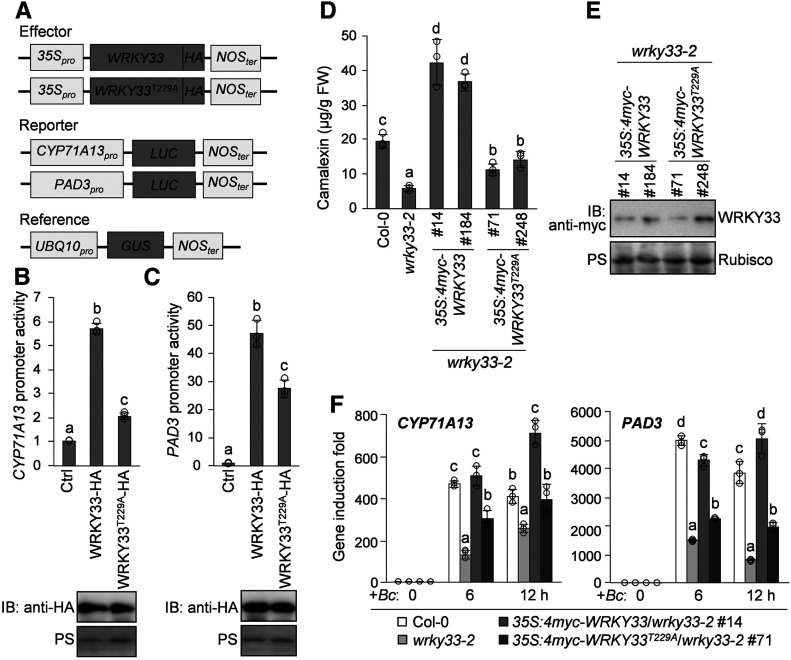Figure 6.
The Thr-229 Residue of WRKY33 Is Essential for Its Full Transcriptional Activity in Vivo.
(A) Schematic diagrams of the effector, reporter, and reference constructs used in the LUC reporter-aided analysis of WRKY33 activities.
(B) and (C) The WRKY33T229A mutant shows significantly reduced transcriptional activity compared with WRKY33 in Arabidopsis protoplasts. The reporter construct CYP71A13pro:LUC (B) or PAD3pro:LUC (C) was cotransfected with the effector construct 35S:WRKY33-HA or 35S:WRKY33T229-HA or the vector control (Ctrl) into protoplasts. The reference construct UBQ10pro:GUS was included in all transfections and served as an internal transfection control. The LUC activities were normalized to GUS activities, and the data are shown as relative fold increases over the vector control. Protein levels of WRKY33-HA and WRKY33T229-HA were assessed by immunoblotting (IB), and total protein loading was assessed by Ponceau S staining (PS).
(D) to (F) The WRKY33T229A mutant only partially complemented the defects of wrky33-2 mutant in the B. cinerea-induced production of camalexin and the activation of camalexin biosynthetic genes. Two-week-old Col-0, wrky33-2, 35S:4myc-WRKY33/wrky33-2, and 35S:4myc-WRKY33T229A/wrky33-2 seedlings were inoculated with B. cinerea spores. Camalexin production was measured at 24 h postinoculation (D). Protein levels of 4myc-WRKY33 and 4myc-WRKY33T229 in transgenic lines were assessed by immunoblotting, and total protein loading was assessed by Ponceau S staining (E). The transcript levels of CYP71A13 and PAD3 at the indicated time points postinoculation were analyzed by RT-qPCR (F). FW, fresh weight.
In (B), (C), (D), and (F), error bars indicate sd (n = 3 biological repeats), small circles represent individual data points, and different letters above the columns indicate significant differences (P < 0.05) among the data from a single treatment ([B] to[D]) or a single time point (F), as determined by one-way ANOVA.

